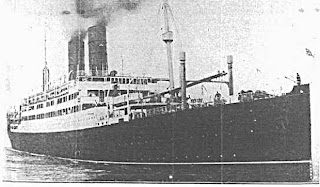Thurber in WWΙ: United We Stand
One of the first things an intern must do when starting at the W. K. Gordon Center is research. While materials are provided, it is up to us to learn about Thurber. This helps us understand the town and prepares us to answer questions guests might have. It also brings unspoken things to our attention. One less talked about topic I noticed involved the First World War. While it wasn’t very obvious, I slowly realized that the books I was reading did not mention the war as much as I expected them to. It was not until I delved deeper that I found my answer. During the war, Thurber was still a bustling city. So what was I not seeing?

There were two important pieces of information that needed to be factored in. First was labor exemptions, as not everyone signed up for the draft. Some people were needed to work and provide for the country while others were off fighting. If someone were to work in the mines or on a farm, they would be needed at home to help keep the country supplied with necessary goods. While they did not go and fight on the front lines, these men kept the country working. The second was Thurber’s large immigrant population. While most men were required to sign up for the draft, only immigrants who declared their intent to become citizens of the United States needed to register. This impacted men twenty-one to thirty in 1917. This was later extended to men between the ages of eighteen to forty-five in 1918.

Labor exemptions and a high immigrant population are some of the reasons Thurber did not go into complete disarray. Every man in Thurber did not have to stop working to serve. Looking through military records, I was able to find information for several Italian immigrants who worked in Thurber and signed up for the draft, though we have not confirmed that they served. A few of these people were Angelo Bottini, Luigi Capovilla, Leandro Neve, and Giovanni Panozzo. Thanks to hardworking people who have traced their family lineages, more records came together to tell some of their stories. I was able to see that they were born in various parts of Italy, some were married, and a few went on to have children of their own.
While they might not have been citizens by blood, men who called America home signed up to help. World War Ι happened during a peak of newcomers arriving in America. People were leaving Europe to flee the war and to try to create a better life for themselves and their families. As a result, more than 15% of the U.S. army were foreign born. According to the 1910 census, 85% of miners in Thurber were born outside of the United States, equaling 891 people. Of these miners, 546 came from Italy. While we do not have the exact numbers, Thurber continued to grow through the 1900s, with Italians still being the largest percentage of the foreign-born population. While many in Thurber were immigrants, everyone called America home.
Curious about soldiers from Thurber? Check out our post “Who was Homer G. Harris?” and In the Cockpit of “Arrowhead”
